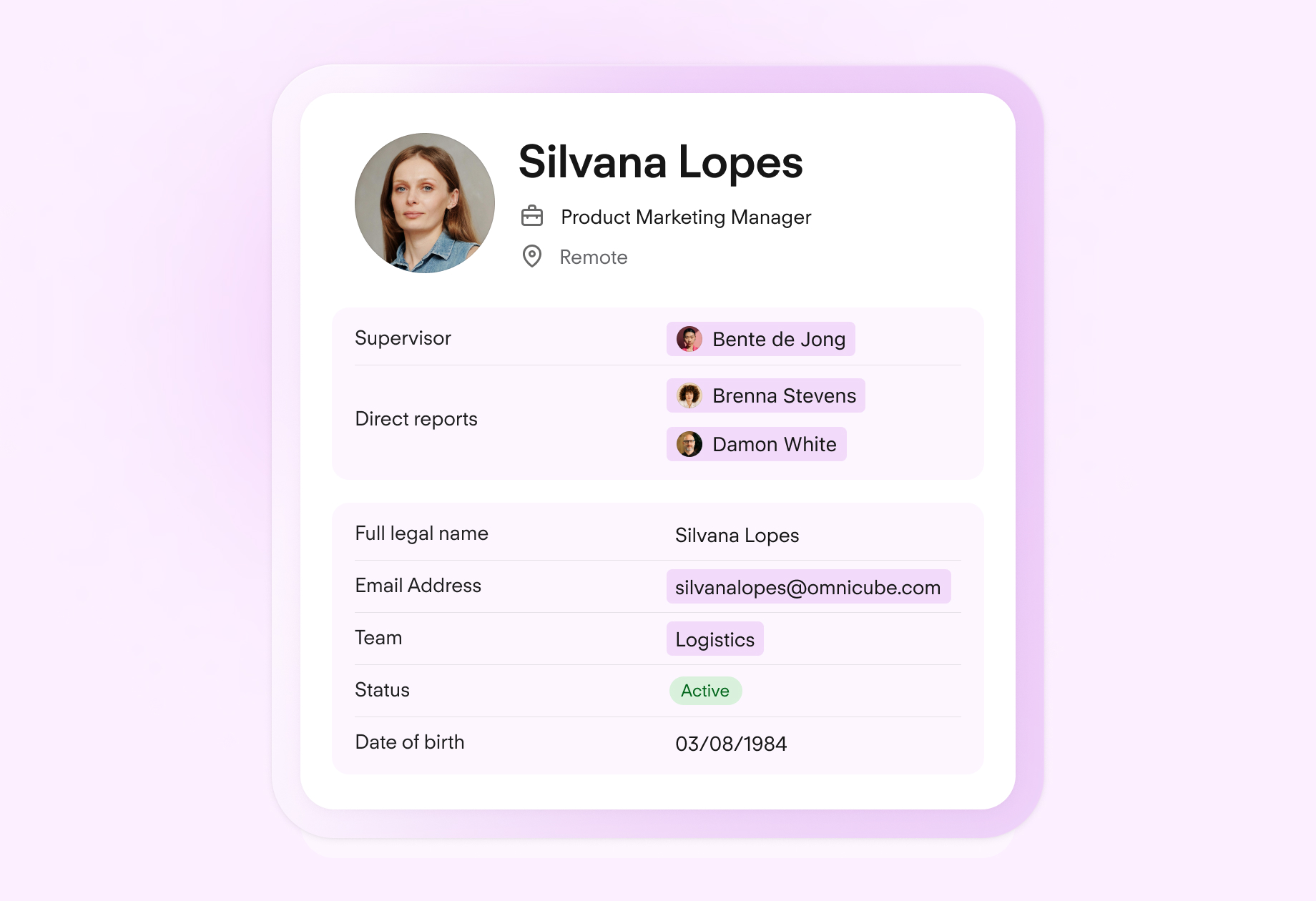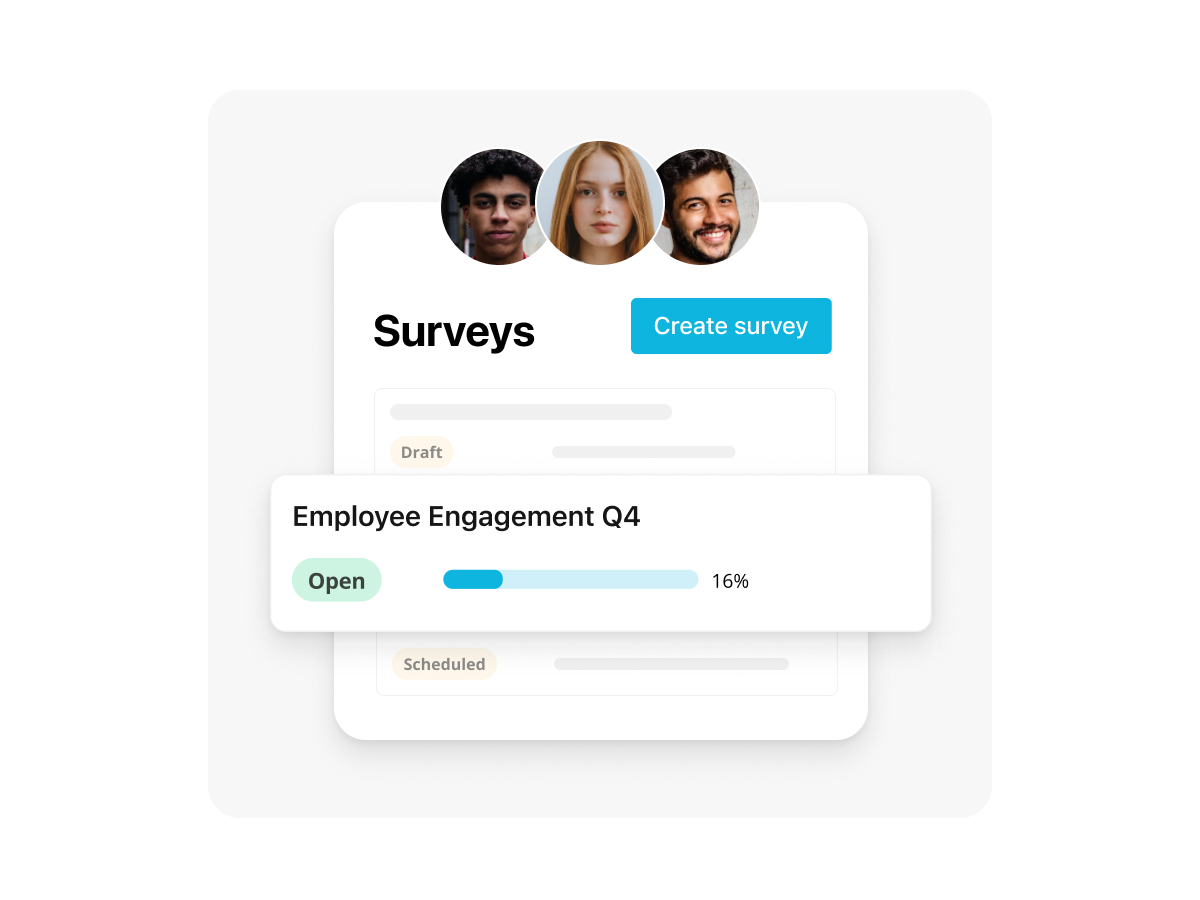What is an employee assistance programme (EAP)?

In this blog post, we discuss what an employee assistance programme (otherwise known as an EAP) is, why it matters to your company and whether you should be investing in one to support your people. Because, sometimes, employees need a bit more assistance than an HR team can provide. When this happens, it may be wise to engage external support.
Empower your employees to make updates on their own with Personio.What is an employee assistance programme (EAP)?
An employee assistance programme (EAP) is a scheme of free, confidential services, support and help offered by companies to their employees during tough times.
EAPs can be made available as part of a flexible benefits scheme – employees can select an EAP from a list of benefits that they are offered – as a dedicated programme that everyone can call on as they require, or as a time-specific offer (for example, in the case of redundancies).
Click here for a more thorough recap of fringe benefit schemes at work.
Why does having an EAP matter?
Employees enjoy their work more, are more productive and tend to stay longer with a company when they are happy at work. But no one is always happy. Often, through no fault of their own, employees can find themselves overwhelmed and stressed. This could be due to work-related factors, personal ones, or a combination.
Employee Assistance Programmes can mitigate these negative effects by providing a confidential sounding board.
Some EAP providers say that they can reduce mental health-related absence levels by as much as 45% and improve productivity by as much as 8%. Indeed, Cover Magazine reported on a survey by the Employee Assistance Professionals Association (EAPA). Their research indicated that for every £1 spent on an employee assistance programme (EAP), UK employers see an average return on investment of £7.27.
When are employee assistance programmes used?
A good employee assistance programme can provide confidential support to employees on any issue affecting their performance at work. This could include the following, but is not limited to these topics:
Physical health
Mental health
Stress and stress-related issues
Relationship problems (at home or work)
Financial issues including debt
Tax
Work conflicts
Concerns about their employment
Addiction – including family members dealing with drug addiction, alcoholism, gambling etc.
Eldercare
Grief
Generally, any issue that could be discussed with a counsellor is open for discussion between an employee and their AP adviser.
However, not all EAPs are created equal. Before investing in an EAP for your people, be clear about what the EAP will offer, in what time zone, and whether they can advise on whether the services they offer could be construed to be benefits-in-kind, for which an employee will need to pay additional tax.
Centralise your employee data

Stop relying on lists and spreadsheets. Organise and edit personnel files and documents with ease, all in one secure, legally compliant place.
Protect your people filesWhat does an EAP typically include?
Most EAPs are offered by healthcare or insurance providers. They typically provide telephone advice (often this is available 24/7), online tools and sometimes face-to-face counselling.
Some EAP providers also offer a medical helpline where employees can get health-related questions answered. Others may even provide telehealth appointments so employees can get remote assistance for medical issues.
How do EAPs work?
An EAP is usually purchased as a service from an organisation specialising in EAPs. However, while they are generally managed by those responsible for employees' health and wellbeing (typically the purchasing company’s HR team), the EAPs operate independently of the company purchasing their services.
It is this independence and separation from an employees’ company that helps employees trust them and know their conversations will remain confidential. EAPs allow employees to gain the benefit of a knowledgeable, trained and sympathetic ear who is also unbiased.
When employees choose to use their EAP they usually need to book a session or log in to an EAP portal – but the details of their EAP are typically provided by their HR department. So it’s important to ensure that all employees know how to access the EAP without having to ask HR, as they might feel embarrassed to do this in the heat of the moment, resulting in them being less likely to take up the EAP’s services when they most need it.
What role does HR play in ensuring EAPs work effectively?
Some argue that companies only provide EAPs as a box-ticking exercise (or, worse, an arse-covering exercise). While this may have been the case in the past, an article shared by the EAP Association in November 2021 noted a 155% increase in the number of employees who have made use of confidential mental health support services. EAPs have, unquestionably, proved their value over recent years.
But, as with many employee perks, their usage and benefit depend, to a large extent, on whether employees engage with them. It is every HR leader’s responsibility to ensure that their team helps employees:
Know about the benefit
Know that the benefit is useful to them
Believe that the benefit is appropriate for them
Believe that it’s okay to use the benefit.
A lot of these factors are affected by the company’s underlying corporate culture. For example, workplace bullying may be tacitly acceptable at some companies (as whistle-blowers’ revelations about the toxic work environment in the NHS demonstrated a few years ago), even though discrimination is prevented by law in the UK.
3 ways HR can better enable an EAP
It’s one thing to send employees an email telling them about the great new benefit that they can now use, it’s another thing entirely to help them understand what your employee assistance programme is, why they should care, and how it can help them.
Here are three ways that HR can ensure an EAP sticks:
1. Make it relevant
One great example of how it’s possible to make employees want to engage with their EAP comes from the Royal Mail. They cleverly changed their EAP’s branding so that their employees (who were, at the time, mostly men) found it culturally acceptable to get valuable and practical help.
Simply by changing the branding to be ‘First Class’, they completely changed the way their EAP was perceived. Their Global Director of Safety, Health, Wellbeing and Sustainability, Dr Shaun Davis describes the psychology behind this transition: "People might not want to admit that they need help. But everybody wants to feel first class!”
2. Communicate it better
Where do employees get their information? It depends. An increasingly popular trend in international HR circles recommends that HR leaders treat employees as if they were customers. To do so requires re-thinking how, when and where employees prefer to receive communications.
A one-size-fits-all communication approach doesn’t work anymore.
SHP (Safety & Health Practitioner) advises that “to be effective, communications need to be planned and informed by employee insight, looking at benefits and wellbeing in an integrated way and tailoring channels and messages according to where and how various groups within the workforce like to obtain their information.”
3. Connect the dots
Raising awareness of your EAP programme is great. But that only goes so far. To truly benefit from the benefits of initiatives like EAPs, it’s important for organisations to follow up on changes that should be made.
This raises an important question: how secret are employees’ secrets? The answer is: a good EAP will provide feedback to the organisations who use their services – but only by using anonymous, aggregated information.
It is then HR’s responsibility to ensure that organisational and / cultural changes are made to improve the workplace.
HR can, therefore, help connect the dots between employees’ challenges, and the potential solutions they can bring to bear. HR can also integrate an EAP into a wider wellbeing programme. For example, a combination of health and fitness events, challenges, promotions, initiatives and even snacks, can raise awareness of the importance of both physical and mental health at work.
When used effectively, integrating health, wealth, workforce and absence strategies could improve employee performance and reduce total healthcare spending.
Effortlessly create and analyse surveys

Measure your employee engagement with a seamless survey process. Now you can design, send and analyse your next employee survey in one place.
See it in actionShould you offer an employee assistance programme?
Looking after your employees’ health at work is a no-brainer. As the EAPA’s research report on The Evolution of employee assistance: Investigating the use, impact and reach of EAPs in today’s organisations concludes, “the real organisational benefits – in performance, engagement and productivity – from a commitment to employee wellbeing” is evident in both hard evidence and ROI: but only when EAPs and related initiatives are used proactively and in a relevant way.
In short, every employer should be able to offer their employees some sort of mental health-related assistance. In these times of challenging recruitment and the age of the Great Resignation, companies need to be able to demonstrate that they care about their employees more than ever. Showing that you have a good EAP is a big tick in this box – as well as a potentially performance-boosting step – that all responsible companies should take.

